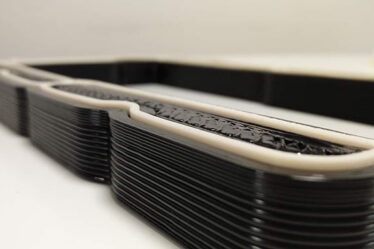Apr 2, 2019 | By Thomas
Glow Box is a 3D printed hybrid object which imbues life into the object by displaying a real-time visualization of a neural network as it works to solve problems. The installation exploits the organic-like nature of the neural network algorithm and combines this with the almost magical ability of the physical object to appear illuminated without apparent electricity. The result is something which blurs the distinction between real and virtual imploring the viewer to question this distinction altogether.


The cube itself was algorithmically designed and then fabricated using Stratasys Polyget 3D printer. The cube has dimensions of 6” x 6” x 6” and is printed in optically clear material (Vero Clear) which exposes the object’s internal structure. Inside the walls of the object, a matrix of conduits curve to connect the cube’s bottom surface to the front-looking face of the object. These conduits hold thousands of strands of optical fiber which redirect light from beneath to be emitted from the front. This allows the analog object to serve as a sort of display when an image or animation is projected onto the cube’s bottom.
This project fuses together two original projects that were created, individually, by the two artists. These projects are Light Path Studies by Yeseul Song and Solution Space Studies by Michael Simpson.
Yeseul Song is a South Korean born artist and researcher based in New York. She uses code and electronics to explore perception, embodied experience, and poetic representations of data. Her works span sculptures, physical installations, digital sketches, and audio visual performances. She is currently an artist in residence at Mana Contemporary’s New Media Program and a research fellow at NYU’s Interactive Telecommunications Program (ITP).
Michael Simpson is an interdisciplinary researcher, musician, and media artist based in New York City. Michael uses real-time data, algorithmic analysis, and machine learning as fundamental aspects of his creative work. Michael is currently focused on the topic of Machine Listening and the ways that this area of study can can be applied to enhance audio-visual works and performances through tighter semantic mappings between audio and visual reactions.
Posted in 3D Printing Application
Maybe you also like:


